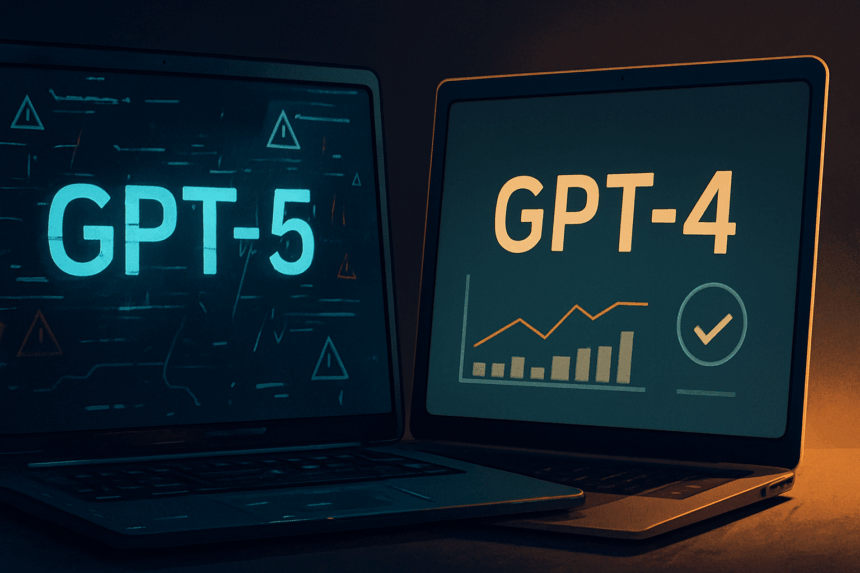OpenAI’s newest AI model, GPT-5, arrived with big promises. The company touted PhD-level expertise and better performance across tasks. But within 48 hours, the reaction wasn’t the celebration OpenAI expected. Instead, many ChatGPT users took to Reddit, X, and other platforms with a message: We want the old models back.
What’s Happening & Why This Matters
When GPT-5 rolled out globally, it came with an important change — OpenAI retired many of its older AI models. Users suddenly lost access to GPT-4o, o3, o4-mini, GPT-4.1, and GPT-4.5. These weren’t just tools for some people; they had become part of daily workflows, and in some cases, emotional support.
One Reddit user described GPT-4o as more than a chatbot: “It helped me through anxiety, depression, and some of the darkest periods of my life. It had this warmth and understanding that felt… human.” Losing access, they said, was like losing a friend.
The backlash was swift. Posts accused GPT-5 of being slower, offering shorter replies, and making basic mistakes — such as miscounting how many times the letter “B” appears in “blueberry.” Others called it “sterile” and “less human.” Some subscribers even cancelled their paid plans in protest.
Initially, the older models were available only to Pro subscribers at $200 per month. After the outrage, CEO Sam Altman announced a change: GPT-4o would return for Plus subscribers ($20/month) for a limited time. “We will watch usage to determine how long to support it,” Altman said in a Reddit AMA. Free-tier users remain without access.
Why Such Negative Interactions?
Critics argue the issue isn’t just about technical performance. The retirement of older models without prior notice disrupted established workflows and reminded users of their dependency on specific AI personalities. As one forum post asked, “What kind of corporation deletes a workflow of 8 models overnight, with no prior warning to their paid users?”
Not all feedback is negative. Some developers praise GPT-5 for its improved coding capabilities and accuracy in specialized tasks. Supporters say it feels more like a professional assistant and less like a conversational companion, which may be exactly what OpenAI intends. But that shift has exposed a divide in what people want from AI — utility versus companionship.
Even beyond OpenAI, nostalgia for retired AI models is emerging as a trend. Recently, about 200 AI enthusiasts held a mock “funeral” for Claude 3 Sonnet from Anthropic, showing that these tools can form emotional bonds with their users.
For now, GPT-5 continues its rollout, while OpenAI monitors feedback. The company faces the challenge of balancing innovation with the emotional connection users feel toward older AI personalities. And as the debate plays out, one thing is clear: AI models are more than lines of code — to many, they’re trusted collaborators.
TF Summary: What’s Next
OpenAI has responded to user backlash by temporarily restoring GPT-4o for paid Plus subscribers. Free-tier users remain without legacy model access. The company has not confirmed how long the reinstatement will last. The feedback regarding GPT-5’s personality, speed, and accuracy versus older models’ familiarity and warmth is important among AI providers. TF expects more discussion to influence other models’ releases — and how companies communicate changes to their user base.
— Text-to-Speech (TTS) provided by gspeech


